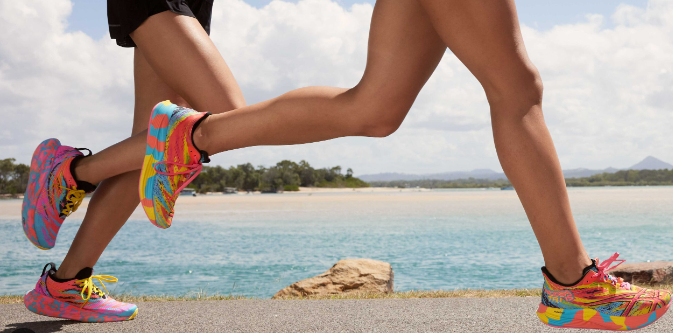You know what you desire from your running shoes: lightweight, cushioning, support, and a comfortable fit. Of course, the most significant component of any running shoe is your experience throughout the hundreds of kilometers you’ll take it on.
We have examined numerous pieces to help you find your next great pair and get a feel for upgrades to your favorite road or trail shoe.
Choosing the best running shoes
Some runners are concerned about the weight of their shoes.
Also, research has shown that heavier shoes require more aerobic energy.
To some extent, less-cushioned shoes tend to have a quicker response time. However, new midsole foams have made a soft ride possible without significantly increasing weight in shoes.
If you plan to travel for an extended period, you may want to choose a more cushioned shoe.
Ultimately, you need to consider the following three primary points before buying new running shoes:
- The quality.
- The weight.
- The looks.

More considerations before buying new running shoes
You must evaluate the following aspects before buying your new running shoes.
- Where will you run?
- Make your they fit.
- How long do you desire them to last?
- How comfortable do you want them to be?

Where will you run?
Do you spend most of your time on the road? Or do you head out onto the dirt roads and rocky paths? You can purchase shoes designed for road running, trail running, or cross-training.
Make sure they fit.
Your shoe should fit correctly right away without requiring any breaking-in process.
How long do you want them to last?
In general, a pair of running shoes should withstand running distances of between 400 and 500 miles (3 or 4 months for regular runners). Please look at your footwear and examine the midsoles and outsoles to see whether they have become worn down or crushed. If this is the case, you should probably get a new pair.
How comfortable do you want them to be?
Do you prefer to have maximum cushioning that makes you feel like you’re running on a cloud, or do you want to feel the ground underneath as you run?
Cushioning, which refers to the thickness of the material under the midsole and the stiffness of the foam, and heel drop are two aspects of a running shoe’s design that you should take into consideration.
Conclusion
No matter how you run, a decent pair of running shoes should give you flexibility, durability, and support.
Finally, a shoe must feel like a part of your body, but that part must be sturdy, comfortable, and dashing.
What do you think are the qualities of a good pair?
Happy Shopping!
